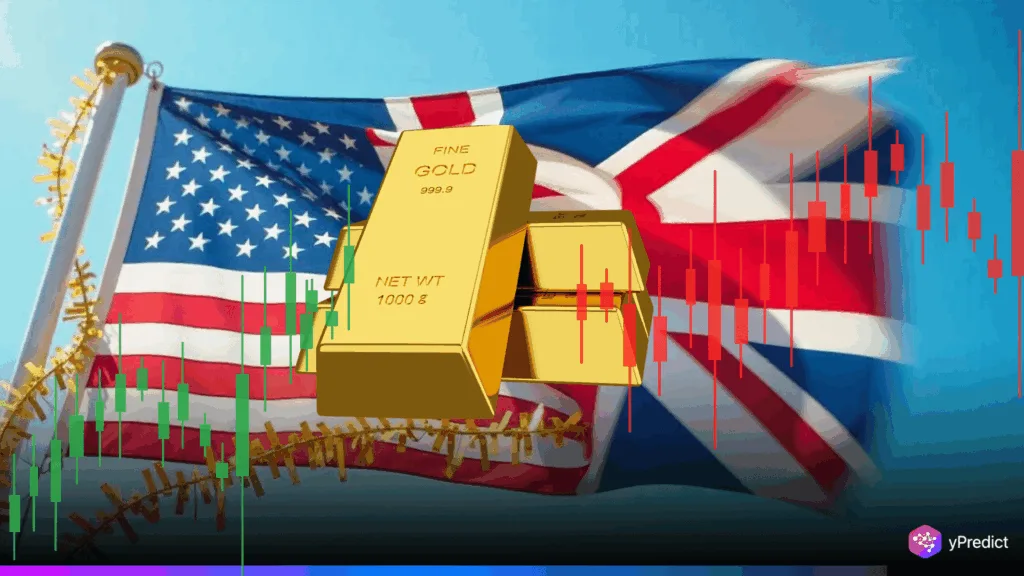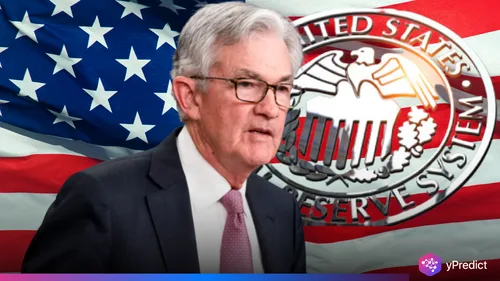
Gold prices declined on Thursday, as investor sentiment shifted towards riskier assets. The metal’s attraction as a safe-haven waned as promising indicators appeared in global commerce, and the US Federal Reserve decided to keep interest rates steady.
The precious metal fell by 1.3% to $3,383.88 per ounce, retreating from a nearly 3% gain the previous day. This downturn is attributed to growing optimism over U.S. and China trade negotiations and the anticipation of a U.S.-UK trade deal, reducing the appeal of safe-haven assets like gold.
US-UK Trade Talks Spark Risk-On Appetite
According to Reuters, gold prices fell on Thursday, reversing earlier gains, as investor appetite for risk increased in anticipation of a new trade agreement between the United States and the United Kingdom. The turnaround in opinion came when US President Donald Trump stated that a substantial trade deal with Britain was nearing conclusion.
By 08:58 GMT, spot gold had fallen 0.7% to $3,339.32 per ounce, following a more than 1% increase earlier in the session. US gold futures lost 1.4% to $3,345 per ounce.
Market excitement was fuelled by the prospect of a formal statement later in the day, with both President Trump and British Prime Minister Keir Starmer set to address the press. Trump indicated on Truth Social that he will hold a media briefing on what he described as a “major trade deal,” while the UK government acknowledged to sources such as Bloomberg and the Financial Times that an agreement would be announced soon, but the specifics remained unknown.
The positive tone from Washington pushed investors towards riskier assets such as shares and higher-yield commodities, causing a shift away from traditional safe havens such as gold. This change in portfolio allocations contributed to a 1.3% decline in gold prices, which went below $3,390 per ounce, reversing much of the metal’s previous gains due to economic uncertainties. At the time of writing, gold is trading at $3,343.64.
Fed Holds Rates Steady, Keeps Cautious Tone
Apart from being affected by the US-UK trade deal, gold prices fell as the Federal Reserve decided to keep interest rates constant, signalling a cautious approach despite signs of lowering inflation. Fed Chair Jerome Powell indicated that rate reductions are unlikely in the short future, emphasising the importance of greater economic certainty in the face of persistent geopolitical uncertainties and the delayed effects of tariffs.
This cautious perspective lowered expectations for monetary relaxation, diminishing gold’s appeal as a non-yielding asset that is normally preferred in low-rate circumstances. Meanwhile, China’s central bank permitted greater foreign exchange purchases by commercial banks to meet higher gold import limits, although this provided no relief from broader market pressures.
Conclusion
Gold’s recent decline illustrates just how vulnerable the precious metal is to shifts in global trade dynamics and monetary policy. As optimism regarding the US-UK trade deal and the Federal Reserve’s steadfast resolve has dampened demand for safe-haven assets, volatility remains a constant. As geopolitics evolve and inflation data develop, gold’s role as a hedge may once again assume relevance, warning investors of surprise moves in pricing momentum.







